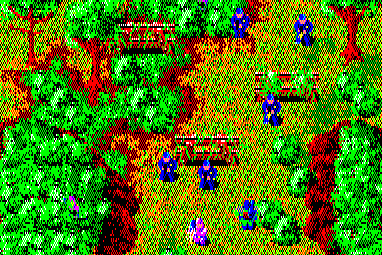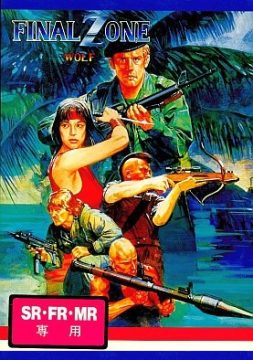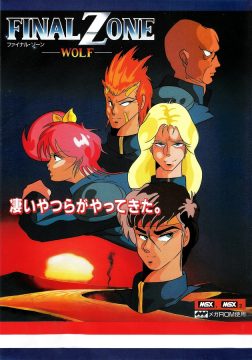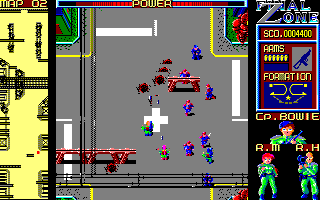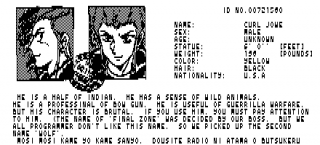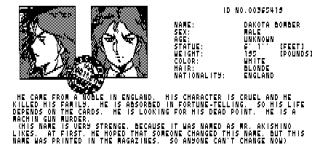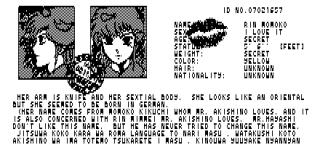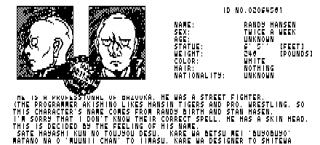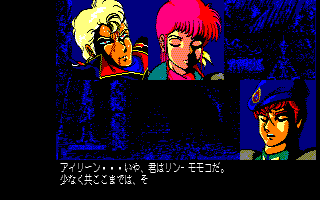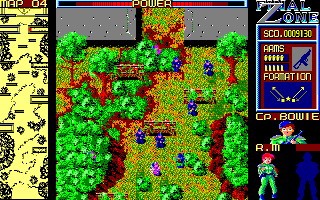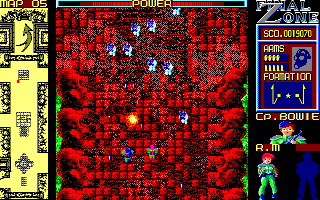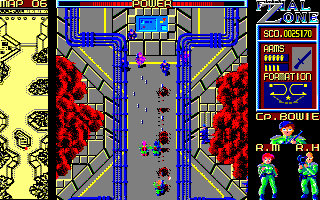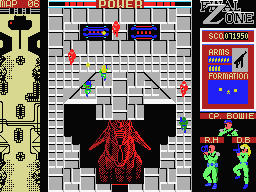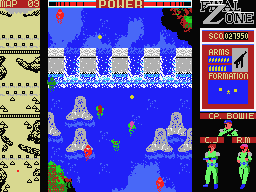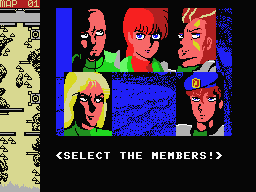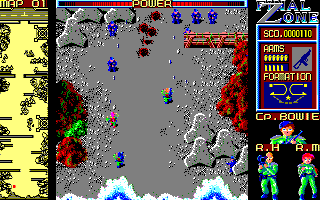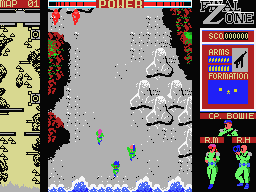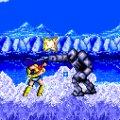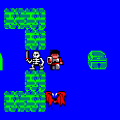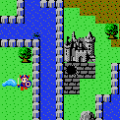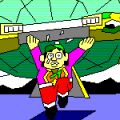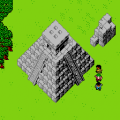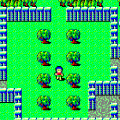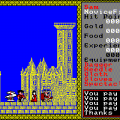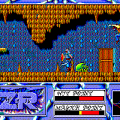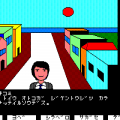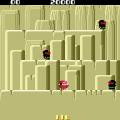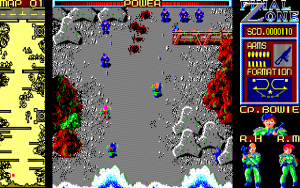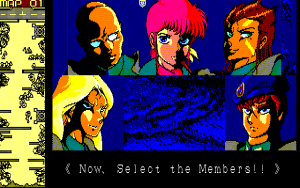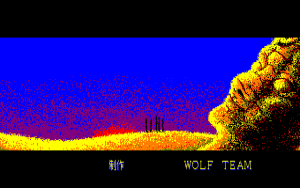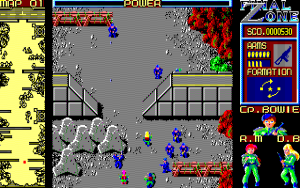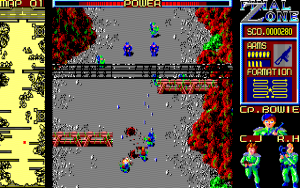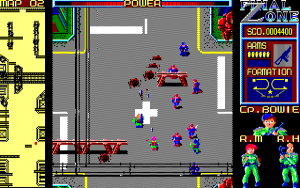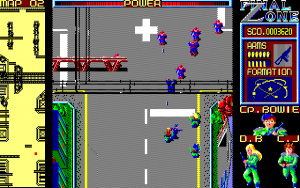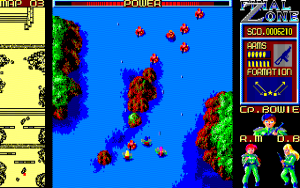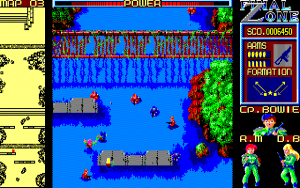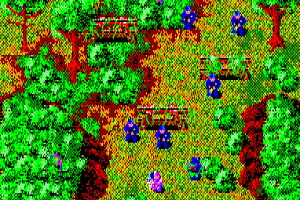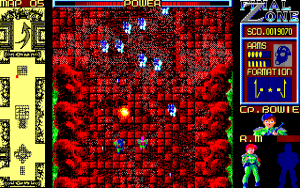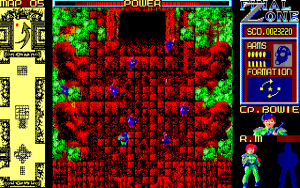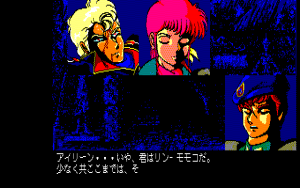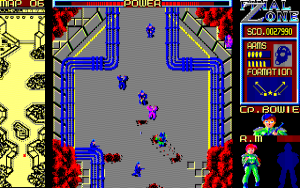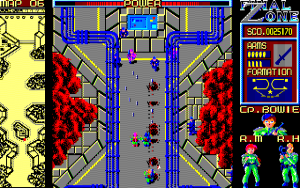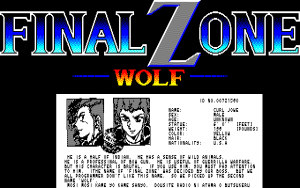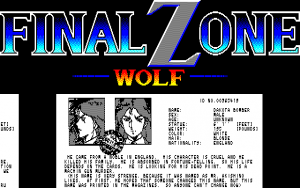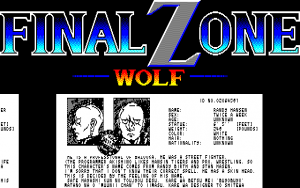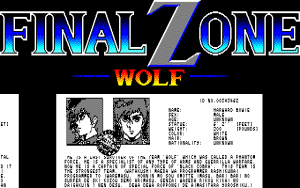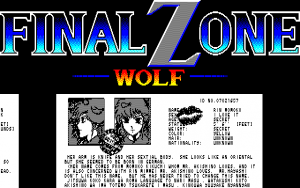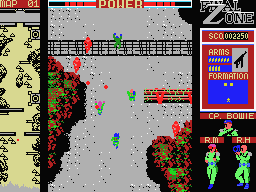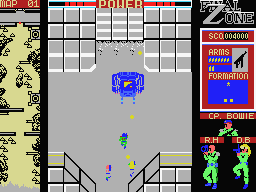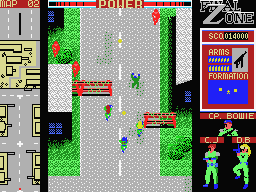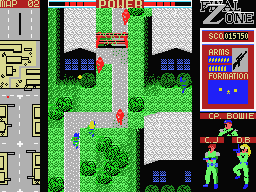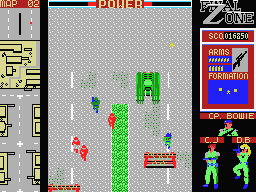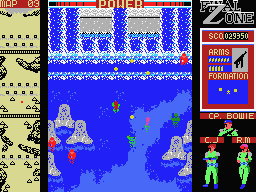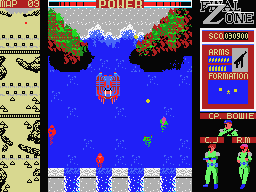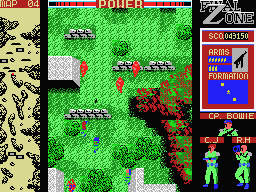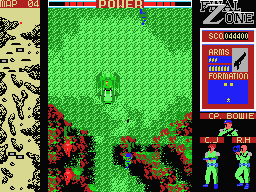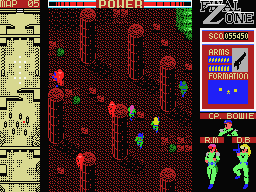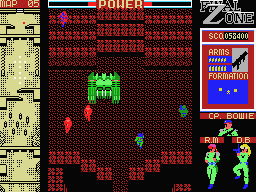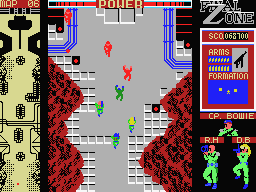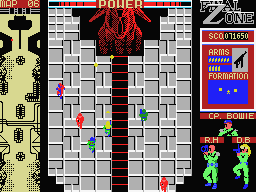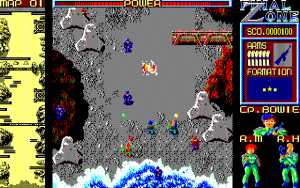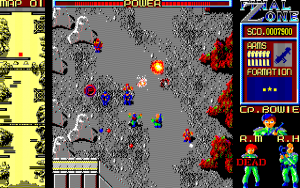Prior to being absorbed by Namco and becoming the “Tales of…” machine, when it was still part of Telenet’s entourage, Wolf Team was quite the phenomenon. While none of their games were really all that great, they all retain a very distinct Japanese home computer flair from the team’s early years. Although they all are well-grounded, if often unpolished genre pieces, many carry a breeze of fresh air with them, a scent of – sometimes misguided – innovation. Which could be better suited to exemplify this than their very first work: Final Zone: Wolf.
Final Zone is an overhead run-n-gun action game like Capcom’s Commando, but it’s not just that. The program contains an extensive story with lots and lots of dialog between each map. The game tells the story of the special forces team Black Cobra, successor to the legendary Team Wolf (yes, they just did that) on a mission to prevent a devastating missile attack from being launched. Unfortunately, it’s not quite yet to the standard of Wolf Team’s next game Valis with its animated cutscenes, instead all you get to see are the character’s cut-out anime heads, while Japanese text scrolls below. The character introductions are (mostly) in Engrish though, appended with liner notes that give intriguing insight into the development process.
While the squad consists of five characters, the player is always in control of the leader, Harward Bowie. Before each stage, however, two of the others can be picked as sidekicks. This is when things get interesting – and then fall apart immediately. Telenet later became synonymous with “decent but not great and somewhat flawed games,” but Final Zone is different. It’s absolutely horrible. The plan was to offer the player a never before seen depth of tactical play, by allowing to determine the formation of the squadmates. Complex-looking schematics to the right show the current movement pattern, which can be cycled through by the press of a key. The only problem is: It doesn’t work. Mass Effect players who ended up shooting their companions in the back more than the enemies in the face know that squadmate AI still was a troubled issue twenty years later. In Final Zone, their movement is always related to the player’s position, but it’s near impossible to coordinate their positioning at the rapid pace, and they just end up getting killed quickly – if you’re lucky. The just as often get stuck in the scenery, making it impossible to go on.
Another unique but badly executed feature is putting consequences to your failure: If your right-hand man dies (yes, always the one on the right) during the mission, he stays gone until the end of the game. The first one that’s selected goes to the left, so you can never lose all of them, but the easiest way to get through the stages is without any of them, anyway. Just go into the battle alone and run past as many enemy soldiers as possible.
That’s another big problem of the game: There’s no point in fighting, because enemies keep respawning and attacking you from all sides, while Bowie and his companions can only shoot straight up. The endless stream of enemies only turns into a finite one at the end of each map, which like in Commando the year before serves as the stage’s “boss.” The amount of enemies on screen is quite impressive for an 8-bit computer game, but this is bought dearly with a terribly choppy game and ridiculously unresponsive controls.
If you don’t keep moving at all times, you’ll be assaulted from behind, with no way of defending yourself other than trying to laboriously maneuver around them. All the while, five new enemies will be spawning to block your way, so why even try? It’s nothing but a waste of ammunition, which is a limited resource. Bowie has a life bar (and his allies can take several hits as well), but invincibility time is short and the enemy forces are relentless, so it goes down fast, and losing only just once results in instant Game Over. New weapons, health and additional grenades can be picked up around the stages, but they’re all invisible. Whether it’s an intentional “feature” to make the game more difficult, or Wolf Team simply forgot to put in the icons for the pickups. The weapon effects are not too distinctive, anyway. The only way to tell apart a machine gun from a bazooka is the tiny explosion the latter causes upon impact. Machine gun and throwing knife, though? That might just as well be the same. There’s also a gas mask, but it’s unclear what it does, if anything at all.
The X1 version that arrived five months later, in November 1986, finally brought some relief in form of icons for the upgrades. The ally formations have also been simplified, most valuable are those that keep the companions close and actually make it possible for the player to keep them alive. There have been some slight changes to the stage layouts, although it doesn’t seem to make that much difference. Unfortunately, the only available disk image of this version was hacked for invincibility and apparently dumped without taking into account the copy protection, so after the first stage you’re kindly asked to not pirate the software. Who in 1986 Japan would have thought of a time and place where purchasing the original would actually be harder than beating the game?
That leaves the MSX version. This port looks and sounds terrible, with crazy sprite flickering and a Game Boy grade musical arrangement, but is actually somewhat playable. Formations are taken from the X1 update, whereas the stages have once again been slightly retouched. Companions don’t die permanently, anymore, ironically in the version where they are most likely to survive, anyway. Supplies are invisible again, which cannot mean anything but Telenet telling their customers how much they hate them.
The biggest change is the addition of proper boss fights – at the end of each stage awaits a turret, a tank, or a gun boat. All of them are supported by more minions, and the later few use entirely bastardly shooting patterns. In one stage you can’t walk up straight up to the boss, which severely limits your maneuverability, as you’re stuck inside a canyon as the tank rains bullets upon you. One would assume that grenades would be the best way to put out these war machines, but they actually don’t do any more damage than the standard guns while being much harder to handle.
In all its versions, however, Final Zone: Wolf is still a bad, bad game. It clearly shows its status as the first game of a yet inexperienced young studio. It may pride itself on being the world’s very first squad-based shooting game, although actually trying to play it that way reveals an utterly failed experiment, an Earnest Evans grade trainwreck that’s worth looking at as a piece of history, but certainly not worth suffering through. The only redeeming factor are the great chiptunes by Nobuhito Koise, which already show the musical qualities Wolf Team games would become known for later. The soundtrack has been included on the Telenet Game Music Collection Vol. 1 CD, as well as the Telenet Music Box for PC-88 and X68000 (which sounds quite differently), so no need to play the game to listen to it.
Screenshot Comparisons
